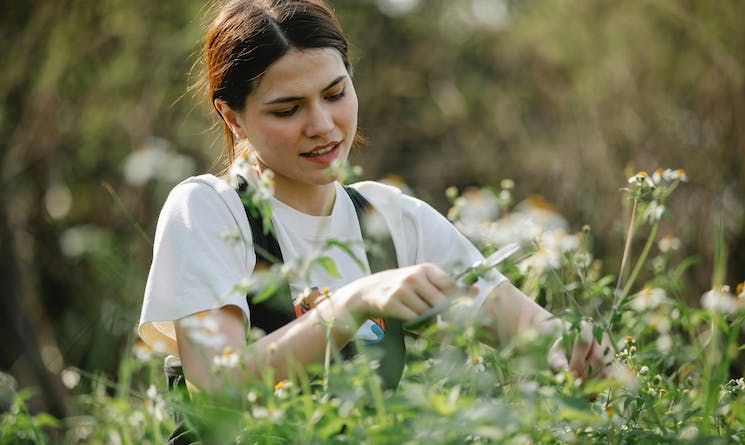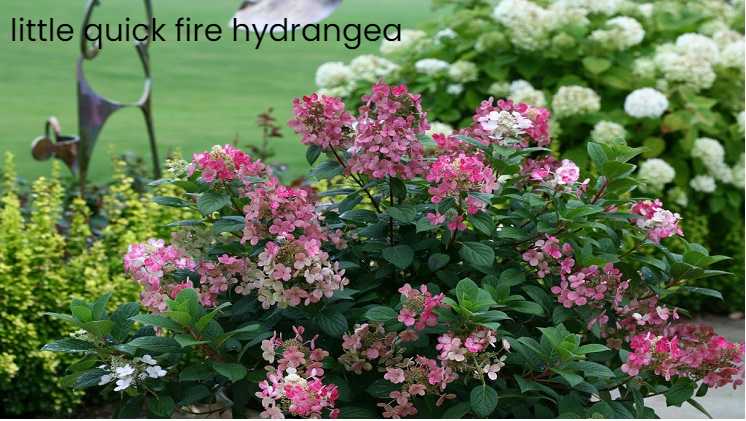The Little Quick Fire Hydrangea is a beautiful shrub that has several outstanding features. It begins blooming in the early middle of summer and then continues through the summer, and then into the Fall. The flowers are white initially and then turn pink. Keep following this article to learn more about this shrub, its features, and its care guide.
Little Quick Fire Hydrangea: What is It?
The Little Quick Fire Hydrangea is a cold, hardy dwarf hydrangea. You can indeed expect one of the longest blooming seasons, with almost half of the year from summer to fall.
These floral blooms are best suited for fresh cuttings and floral arrangements. They are also used in bouquets throughout the year.
Some of the features offered by the Hydrangea Little Quick Fire include
- These belong to the category of dwarf hydrangea. They can reach 3 to 5 feet in height. This compact size of the hydrangea makes it one of the most innovative and excellent options for containers.
- The exciting blooms make it one of the most innovative options. The flowers start as pure white and then move on to become a light pink to a deep rose red in fall.
- Early blooms are what makes it the best flower blooms one of the most innovative. They begin blooming one month before the other panicle blooms. Unveiling the Unsung Heroine: Margaret Wilpon, the Pillar of Strength Behind the New York Mets
- A longer bloom period would make it one of the best picks for use at your home. They bloom throughout the fall, which will give you the best blooms throughout the year.
- The blooms do not get affected by the alterations in pH fluctuations and thus there are no blue blooms whatsoever. Modern barndominiums are a type of home design that combines the traditional barn structure with modern amenities and features.
- Low-maintenance flowers would further make it one of the unique options to look for. You do not need to take extreme caution in taking care of the plant.
How to care for Hydrangea Little Quick Fire?

The Little Quick Fire Hydrangea is one the hardest and easiest growing Hydrangeas. The tolerance that they show towards air pollution makes them stand out as the best-suited option for urban areas. You can opt for the following care for the plant-
Light
The ideal setting for the Little Quick Fire Hydrangea care would be dependent on the location you are in. Are you from the northern region? You can plant them in full sunlight. However, if you are from the south, it is advisable to ensure that it does not receive a lot of midday sun.
Soil
The Little Quick Fire Hydrangea grows in moist soil. However, the soil should be well-draining. It is a good idea to choose soil that is rich in organic matter. This will ensure rich nutrient content in the soil. It is also less likely to dry out. You can apply a rich amount of mulch to make the soil moist. Ensure to avoid the areas that may be exposed to sun and wind. You need not worry about the pH value of the soil, though.
Water
During the first growing season, it is a good idea to plant it once every few days. If you have sufficient rain, you can avoid watering it too frequently. Once the plant is established, the shrub would be doing best if the soil is moist – but not soggy.
The full-grown little quick fire hydrangea does not need much care in terms of watering. If you notice any sort of wilting of foliage during the extended dry season, you can water it slowly and deeply. It should begin springing back as it would be doing normally.
Temperature and humidity
The cold temperature does not affect the plant in most of the cases. The full grown little quick fire hydrangea is very hardy and does not get affected by extremely cold temperatures. However, the Little Quick Fire Hydrangea care would be a little complicated in the hot summers. Are you in a hot weather scenario? Make sure that the soil is moist. High humidity may be a concern. It can cause fungal disease.
Fertilizers
The Little Quick Fire Hydrangea does not need you to enrich the soil with fertilizer. It is sufficient if you fertilize the hydrangea paniculata little quick fire soil with organic matter. You can, however, fertilize if needed with a high-phosphorus fertilizer (such as 15-30-15) which encourages blooming.
The Concluding Thoughts
The Little Quick Fire Hydrangea is a highly valuable genus of some 100 species of shrubs. Since they can grow for the whole year round, they would prove to be the best option for enjoying the best floral supply throughout the year. The low-maintenance nature of the plant further makes it one of the excellent options in the long run.
FAQ
You can plant the hydrangea paniculata little quick fire in the moist soil that drains quickly enough. You can grow it in full sun in the northern region, while in the southern region, you can grow it in a little shade.
You do not ideally need to prune the plant, but pruning them during the dormant period may be a good option. This can help encourage bushy growth.
The only difference between the quick fire and the little quick fire is the size. You would witness similar blooms on the two, but the little variant comes with a plant size of up to 3-5 feet. It can be an excellent dainty shrub on almost any container.
The right season to plant the hydrangea is during late spring. You can plant them after the possibility of frost has passed. You can also consider early fall to plant them. The best time is when the night temperature ushers in very cool air.
The little quick fire hydrangea is an excellent option to grow in a complete or partly sun-exposed environment and moist, well-drained, fertile soil.
